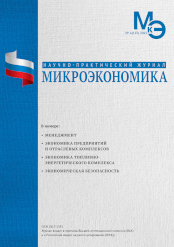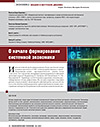Development and prospects of the markets of the European-Asian Economic Union
DOI: 10.33917/mic-6.113.2023.5-13
The main markets under study, which continue to develop actively on mutually beneficial terms, are the markets of the countries of the European-Asian Economic Union (EAEU). Therefore, in the context of the refusal of the European Union (EU) countries from the work of European economic entities on the territory of the Russian Federation, the procurement of natural resources necessary for the needs of energy companies, the relevance of the formation of strategic goals, criteria for their achievement, the implementation of planned plans and specific ongoing activities in full, is an important task of governments in public management systems of all five countries of the union. To achieve the main strategic goal of the EAEU activity – to improve the standard of living of the population of the countries. It is necessary to ensure the joint development of three single markets: labor, goods and finance. The further successful solution of this problem is facilitated by the activities of the Single Customs Union, aimed at the almost unhindered movement of labor and goods within the borders of the Union countries. Such integration of the countries’ trade and economic activities makes it possible to significantly increase the trade turnover between the countries, attract labor resources, first of all, to the Russian Federation. However, there are also unresolved problems. For example, in order to strengthen the production and food integration of countries, it is necessary to introduce additional provisions into the mechanisms for regulating the export movement of goods. In order to carry out mutual attraction of finance in the form of investments on the territory of these countries, a single regulatory space is being created, which should include a standard.
References:
1. Federal Law «On the development of small and medium-sized businesses in the Russian Federation» dated July 24, 2007 N 209-FZ. URL: https://www.consultant.ru/document/cons_doc_LAW_52144/?ysclid=lnivwtgphd925897838
2. Zhokhova V.V. Social entrepreneurship: essence and concept. News of the Far Eastern Federal University. Economics and Management. 2015;1:85-98. (In Russ.).
3. Zhukovskaya I.V. Specifics of researching the service market using the example of the Republic of Tatarstan. Microeconomics. 2020;5:93-98. (In Russ.).
4. Pyatanova V.I. Social responsibility of business and value creation. Microeconomics. 2022;3:57-62. (In Russ.).
5. Ragimkhanov A.V. Systematization of scientific approaches to the study of competitiveness of services: from theory to practice. / A.V. Ragimkhanov, I.V. Zhukovskaya. Microeconomics. 2022;1:75-78. (In Russ.).
6. Tolmachev Yu.M. The role and place of social entrepreneurship in the digital economy of the Russian Federation. Economic Sciences. 2023;5 (222):363-370. (In Russ.).
7. Website of the Ministry of Economic Development of the Republic of Tatarstan. URL: https://mert.tatarstan.ru





